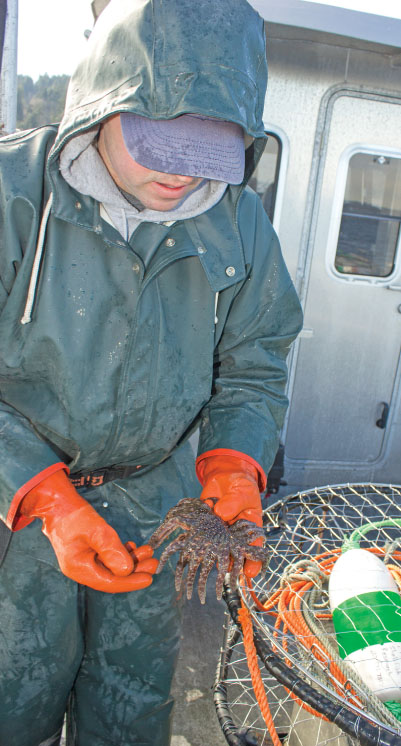
Puyallup Tribe Observes Disease Affecting Sea Stars
E. O’Connell, Northwest Indian Fisheries Commission
As part of its regular crab population monitoring, the Puyallup Tribe of Indians is tracking the impact of a myste-rious ailment that is killing sea stars.
An outbreak of sea star wasting syndrome was first noticed last fall in British Columbia. The syndrome starts as small lesions and eventually the infected sea stars disintegrate. Since symptoms were first noticed, the syndrome has quickly spread throughout the Salish Sea and along the Pacific coast.
While there have been previously documented outbreaks, nothing on this scale has ever been recorded. There is no known cause.
“After we started conducting crab surveys in April last year, we started seeing a lot of sea star by catch,” said George Stearns, the tribe’s shellfish bi-ologist. “One pot near the north
point of Vashon Island was full of sea stars.”
The tribe regularly monitors eight stations between the north end of Vashon Island and the Tacoma Narrows. Each station includes nine crab pots.
During the tribe’s early surveys, the sea star population seemed healthy. But Puyallup tribal scientists recorded a sharp die-off in October.
“We saw one monitoring site go from four sea stars per pot in April to 12 in September to zero in October,” Stearns said.
When a diseased sea star catches a ride on a tribal crab pot, it deflates quickly. Within a few minutes, a normally rigid sea star will be hanging on the pot like a wet rag.
“Some of the sea stars we are finding are literally melting in front of us,” Stearns said.
Tribe Narrowing Locations Where Crabs Molt
The Puyallup Tribe monitors crab to pinpoint exactly when the shellfish in the tribe’s harvest area molt, or shed their shells.
“Crabbing during the middle of molting, which makes them soft and vulnerable, can increase the handling mortality,” said George Stearns, the tribe’s shellfish biologist. “It’s a common practice to shut down harvest during the molt. But we’ve
only had a general idea of when that occurs down here.” The data collected will also
help the fisheries managers put together a more complete picture of crab populations in South Sound.
“We GPS the locations so we’re at the same spots and put the pots in for the same length of time,” Stearns said. “So we know we’re comparing apples to apples each month.”
